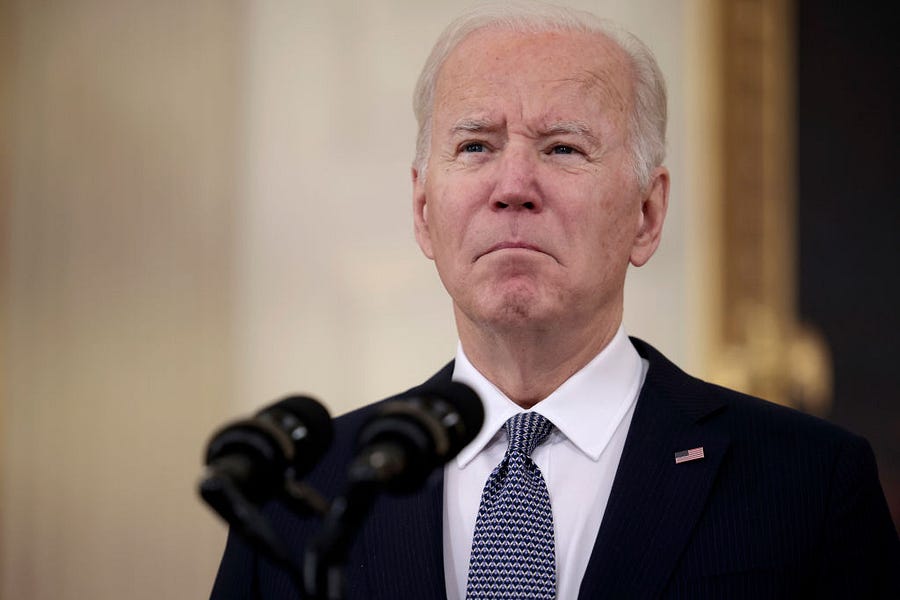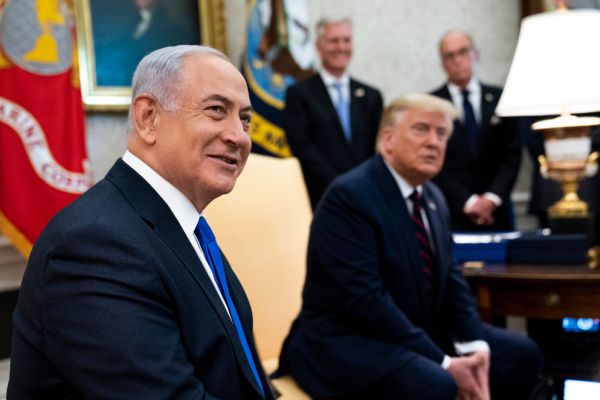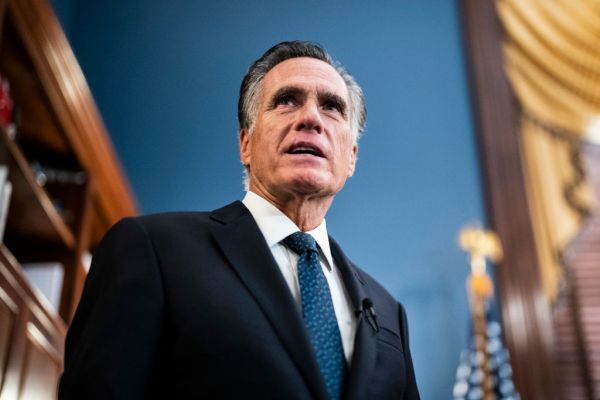Last week marked the first time the Biden administration partook in indirect negotiations with the Islamic Republic of Iran’s new ultra-hardline government. Unsurprisingly, after days of discussion, no deal was clinched to revive the faltering 2015 nuclear accord. Iran made maximalist demands and upended initial agreements reached during previous rounds of talks. Washington now faces the uphill challenge of containing Tehran’s expanding nuclear program while recalibrating its Iran policy.
Tehran is increasingly comfortable with reducing international monitoring of its atomic activities and making irreversible nuclear advancements on the ground. The regime may even be inclined to push uranium enrichment to weapons grade. Tehran’s more recent boldness stems in great part from signals Washington sent throughout 2021 that the United States is unwilling to hold the regime accountable.
A close look at Iran’s nuclear advances over the past two and a half years shows Tehran’s most egregious nuclear violations occurred under Biden’s watch. The Trump administration’s May 2018 withdrawal from the nuclear deal, or Joint Comprehensive Plan of Action (JCPOA), provided an avenue—and political argument—for Iranian escalation, yes. But withdrawal merely expedited the fait-accompli of Iran’s growing enrichment capacity. It didn’t create it. The 2015 accord had already allowed for significant Iranian nuclear expansion after 2026.
Tehran’s initial responses to Trump’s “maximum pressure” campaign was to absorb what it hoped would be a short-lived attempt at unilateral sanctions. In May 2019, however, Iran embarked on a policy of graduated escalation in which it incrementally and overtly breached the JCPOA’s limits. The regime also embraced other forms of escalation—particularly in the maritime and regional domains—in hopes of generating sufficient fear and leverage to make the Trump administration end its mounting pressure policy.
Despite early fears that Tehran might use the withdrawal to dash to a weapon, at the start of 2020, even nonproliferation experts supportive of the JCPOA assessed that Iran was not expanding its nuclear program as quickly as it could. While Tehran touted the end of all nuclear-related restrictions and continued growing its uranium stockpile, its advances up until late 2020 paled in comparison to the nuclear risk-taking that followed.
During the 2020 presidential campaign, candidate Joe Biden sought a sharp contrast with the Trump administration’s Iran policy, which he critiqued as risky and war-prone. By pledging to restore the deal Trump left, which offered sanctions relief in exchange for temporary nuclear limitations, the Biden team implied that military force would not be on the table as a tool of counterproliferation.
Weeks after Biden’s election, Iran’s Guardian Council approved a new parliamentary law mandating a significant escalation of the country’s nuclear activities. Both events would foreshadow the conflicting sensibilities guiding Washington and Tehran in 2021: risk-aversion and restraint by the former and risk-tolerance and escalation by the latter.
Starting in January 2021, Iran resumed enrichment of uranium to 20 percent purity, a level technically considered highly enriched and an activity that Tehran had paused in 2014. Iran carried this out at Fordow, a highly fortified enrichment bunker that the West failed to shutter in previous rounds of nuclear talks. In February, the regime pulled out of an inspection agreement with the International Atomic Energy Agency (IAEA) that gives greater insight into nuclear activities, and threatened to delete agency recordings and data at relevant Iranian sites. In April, Iran began to enrich uranium to 60 percent purity, a historic first for the Islamic Republic, putting it a stone’s throw from 90 percent, the ideal level for atomic weapons.
In 2021, Iran also began to phase-in hundreds of advanced centrifuges, machines that can more efficiently produce enriched uranium than older, JCPOA-permitted models. Advanced machines are essential for any Iranian attempt to “sneak out” of its nonproliferation commitments—read: Make a covert dash for a bomb.
In August, Iran reportedly produced 200 grams of uranium metal using 20 percent enriched uranium. Tehran has no immediate civilian need for the material, which can be used in the core of a nuclear weapon.
Iran also stepped up production of advanced centrifuge parts days ahead of the latest nuclear talks. On the third day of negotiations, Tehran started enriching uranium at Fordow using a cascade of advanced centrifuges known as the IR-6, which can enrich uranium at more than five times the speed of Iran’s first-generation machines.
The totality of these moves have implications for a future nuclear weapons program and offer the Islamic Republic technical and engineering feats that cannot be unlearned, regardless of any deal.
The U.S. response to Iran’s advances has been almost non-existent. Along with its European partners, Washington failed to backstop the IAEA—even as its director general likened Tehran’s reduced monitoring as putting the agency in a position of “flying in a heavily clouded sky.” At all quarterly IAEA Board of Governors meetings in 2021, the parties failed to censure Tehran over nonproliferation safeguards violations.
Moreover, in the absence of vigorous U.S. sanctions enforcement and additional penalties against illicit Iranian oil exports, Tehran continued selling oil to China, providing the Islamic Republic with greater financial incentive to resist diplomatic entreaties for restraint.
In 2021, the Biden administration also resisted taking a hardline against Iran-backed terrorism and other activities. Washington removed Iran-backed militants in Yemen from the U.S. Foreign Terrorist Organization list, gave only a muted response to the attempted kidnapping of a U.S. citizen on American soil, and reportedly withdrew missile defenses from the Middle East at a time when Iran’s missile capabilities were rapidly evolving.
Throughout, the Biden administration continued denigrating the notion of pressure on Iran and showed no real indication of a “Plan B,” other than blaming its predecessor.
Put differently, the Biden campaign, and later the administration’s own words and deeds, cemented an impression for Iran’s leaders that America was uncomfortable with escalation and eager for any agreement—even a lesser one—that could be spun as capping Iran’s nuclear program. Underwriting this view was the United States’ bungled exit from Afghanistan in August. As the commander of Iran’s Islamic Revolutionary Guard Corps (IRGC) said a month later, “The America of today is not the America of the past ten, twenty, or thirty years.” Without counterpunches from Washington, Tehran’s revolutionaries proved once again that old habits die hard: The regime pocketed each concession and continued escalating.
Predictably, Iran has come to the latest negotiations with an attitude of obstinance, levying major demands for sanctions easing, and making the U.S. and European quest to return to the deal nearly futile. On December 3, France, Germany, and the United Kingdom—the “E3”—issued one of their clearest and sternest rebukes, noting, “Over five months ago, Iran interrupted negotiations, and since then, Iran has fast-forwarded its nuclear program.” The E3 concluded, “Time is running out.”
As is evident from the timeline of Iran’s nuclear advances, an American willingness to turn the other cheek has only invited additional escalation. Yet Tehran’s economy, still faltering from Trump-era sanctions, remains vulnerable to revived international pressure. To change Iran’s calculus, Washington and its European counterparts must now flip the script.
Step one requires scheduling a special IAEA Board meeting to condemn Iran’s nuclear advances and safeguards violations and give Tehran a deadline for compliance. If Iran fails to meet the board’s deadline, the board should refer Iran’s case back to the U.N. Security Council.
At the Security Council, the United States and the E3 must “snap back” international sanctions on Tehran that are currently suspended under Resolution 2231, which enshrines the JCPOA. Russia and China can veto new Iran sanctions at the Security Council, but a provision in the JCPOA means they cannot prevent the restoration of prior resolutions and their penalties.
Separately, the U.S. and Europe must backstop international pressure with action of their own. The parties must prepare a new set of sanctions that would be triggered absent Iran’s clear nuclear restraint and rollback.
In addition, America must bolster its military deterrence against Iran. Washington should express an unambiguous willingness to use force to prevent Tehran from developing a nuclear weapon. The administration can try to change Iran’s impression about American will by forcefully responding to drone and rocket attacks from Iran-backed militias in Syria and Iraq and by empowering the U.S. Naval Forces Central Command’s newly established “Task Force 59,” which can become an effective tool against Iranian maritime escalation. Ultimately, the Islamic Republic is unlikely to change course unless it knows that further malfeasance invites ruin.
Iran’s amassing of atomic knowledge and its willingness to run greater risks is driving it closer to the nuclear weapons threshold, after which stopping Tehran’s forward momentum might be impossible. In a 2012 debate, then-Vice President Biden said of Iran, “facts matter.” President Biden must recognize the fact that his Iran policy risks giving birth to an Iranian threshold nuclear capability. Washington should embrace pressure before it’s too late.
Behnam Ben Taleblu is a senior fellow at the Foundation for Defense of Democracies (FDD), where Andrea Stricker is research fellow. They both contribute to FDD’s work on Iran and non-proliferation matters. Follow Andrea on Twitter @StrickerNonpro. FDD is a Washington, D.C.-based, nonpartisan research institute focusing on national security and foreign policy.








Please note that we at The Dispatch hold ourselves, our work, and our commenters to a higher standard than other places on the internet. We welcome comments that foster genuine debate or discussion—including comments critical of us or our work—but responses that include ad hominem attacks on fellow Dispatch members or are intended to stoke fear and anger may be moderated.
You are currently using a limited time guest pass and do not have access to commenting. Consider subscribing to join the conversation.
With your membership, you only have the ability to comment on The Morning Dispatch articles. Consider upgrading to join the conversation everywhere.